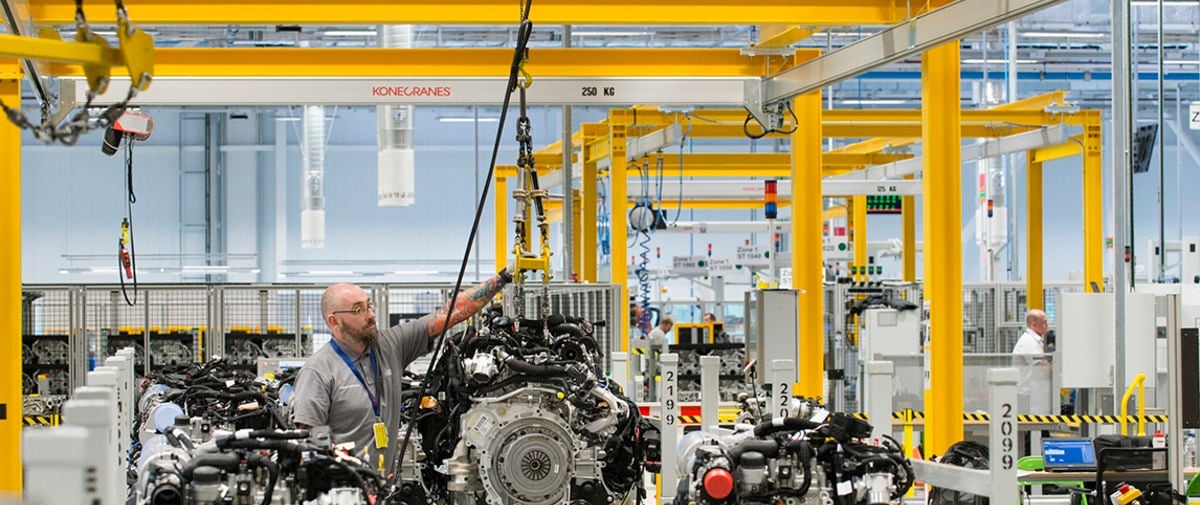Chain hoist as change agent
We can make the argument that for many years an electric chain hoist has been thought of as just a commodity-based product. You determine the required capacity, add a little wiggle room for future production needs, pick from a select range of speeds, and figure out how you will support it. The biggest decision made—or upgrade purchased—was splurging for the second speed.
By Chuck Snook, Director, product sales
With the appropriate maintenance program and proper duty class provided, the electric chain hoist has simply done its job time after time. You settled on a comfortable brand and built up a stock of spares to keep the chain hoists running and downtime to a minimum. At the end of the product’s life, re-order and repeat.
We did not and maybe do not truly appreciate the electric chain hoist’s ability to make a significant contribution to our facilities beyond “just lifting that load.” For years, we have seen exponential change in machinery technology that has allowed us to improve the health and safety of our employees and keep up with the increasing demands of our production. Chain hoists, however, have stayed relatively the same for decades; therefore, why would we look to this machine as a possible change agent?
Does your organization wish to reduce the risk of injury, have more engaged employees and improve productivity?
Have you ever thought of a chain hoist as the solution to some of these improvement opportunities? Probably not—but you should.
The electric chain hoist has quietly been reimagined. It now provides a vast number of technological and mechanical enhancements that can provide positive contributions to the needs of our ever-changing environments and ergonomic requirements benefitting our workers and bottom line.
Variable speed drives were introduced to chain hoists several years ago, and the handling of products became faster and smoother. This drive technology assisted with cycle times and operator comfort. Important maintenance data could be recorded and used to troubleshoot or alert you to improper use. It was a great new beginning for an aging workhorse.
More recently Smart Features—previously only available on process cranes —have been added to electric chain hoists, taking these units to a new level. New chain hoist technologies can address potential safety and production risks such as:
- Shock loading
- Using the upper limit switch as an “operating” limit
- Overloads
- Lack of speed or too much speed
- Twisted chain links
- Chain wear
- Lifting too high or too low
- Poor ergonomics
Each of these scenarios can be detrimental to operations and can increase the risk of injury and production loss.
Technology drives Smart Features
Hoists currently on the market are available with new chain and pocket wheel designs that extend life and lower noise pollution emitted by these machines. Maintenance-free transmissions with purpose-built gearing provide an ergonomic benefit and lower overall lifetime costs with no scheduled maintenance for the designed lifetime. Self-adjusting brakes are standard on several models which further decreases maintenance demands and associated costs.
Drive technology now provides us with Smart Features as a standard offering. Some of the available features include Extended Speed Range which allows higher lifting and lowering speeds when handling light loads for increased productivity. Programmable limits will allow you to optimize your lifting envelope to reduce cycle times and at the same time address the issue of improperly using the standard upper limit as a means of stopping the hoist. A programmable limit switch can be an operating limit which provides additional protection to the worker, product and surrounding area.
New technology has also given us Slack Chain Detection which can reduce the risk of twisted chain, protect sensitive parts being handled with a heavy below-the-hook attachment—and most importantly—reduce the potential risk of injury when too much chain is inadvertently drawn out by the operator.
In addition to Smart Features, hours can be displayed, events recorded, electronic overloads can be programmed and PLCs can be interfaced with this once “simple” workhorse. Overall maintenance is reduced as there is little to no demand on wear items such as the slip clutch assemblies, brakes, and supporting structures. The operator has a much better user experience with comfortable controls, optimized lifting functions and less risk of injury or damage.
There are many other options and capabilities available on today’s electric chain hoists to assist with the specific requirements of your unique operation. From simple contactor controls to inverter technology with Smart Features, the chain hoist is no longer just a commodity product but can be a valued partner in reaching your safety and productivity goals.
Learn more about chain hoist retrofits
